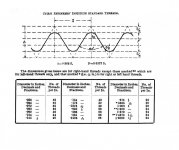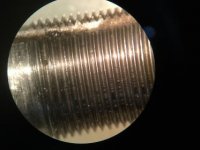jim rozen
Diamond
- Joined
- Feb 26, 2004
- Location
- peekskill, NY
Bore hole in each piece for a steel locating pin like what was stated before.
Now a professional welding place could mount that to a rotating fixture and make a perfect set of beads. They might even recess the fractured line to get deeper
weld penetration. Then maybe grind it or leave it as is.
My BMW motorcycle had a worn a gear at the rear wheel where the drive shaft connects. The gear section was cut of and a new gear welded on as described above.
Silver solder is the way to go here. This part is probably hard enough that a file won't mark it.
The spline coupling for the wheel on those bikes is a known bug. I've always thought I would try to wire EDM a new spline and silver solder that to the ring gear in the
bevel drive. I *think* you can buy the new female wheel spline couplings.
The /2s only have one kind of wheel, the front wheel has the spline on it too. That way the sidecar rigs only have to carry one spare wheel. Fits front, or back!



